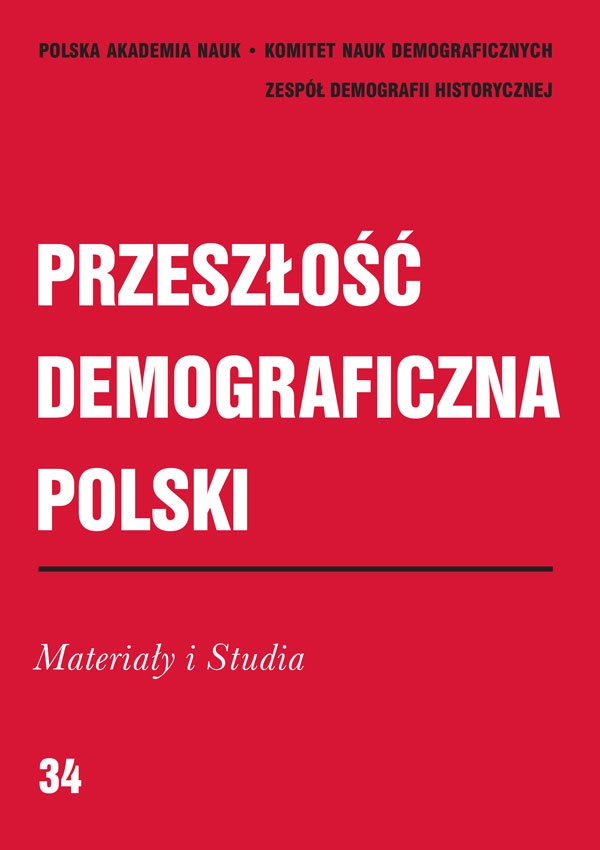Demografia rodziny mieszczańskiej w Starej Warszawie w pierwszej połowie XV wieku
Abstrakt
The demographics of burgher families in Warsaw Old Town in the first half of the 15th century
The aim of the study has been to examine the demographic condition of late medieval burgher families in Warsaw Old Town. The analysis covers such indicators as the number of living offspring, replacement fertility rate as well as the size of the family taking into account its wealth.
The study is based on family property deals recorded in the court register of the town of Warsaw Old Town 1427–1453. The author’s quantitative analysis covers 155 entries.
The average number of living offspring for the 155 analysed families was 2,35. Yet a correlation with the level of wealth has shown that plebeian families had 1 living child on average, common families 2 children, while patrician families were able to raise over 3 children. Burgher families also had a low replacement fertility rate 1,15 indicating that one father had one son.
The town limited their residents demographically, making it impossible for most families to build structures encompassing several generations and many children. In comparison to the peasants and nobility, the cives had smaller families and lower replacement fertility rate.

